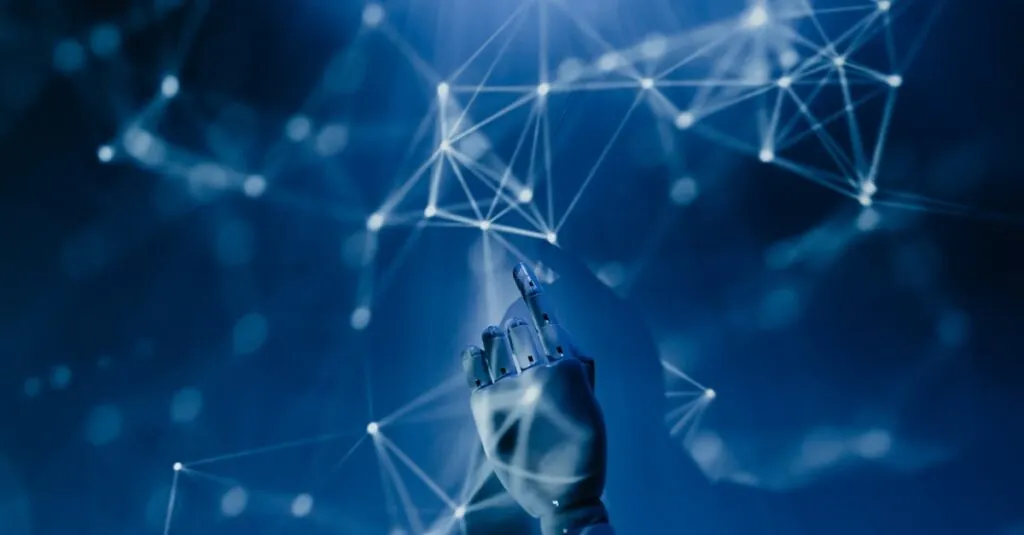In a world where cyber threats lurk around every digital corner, it’s time to let AI take the wheel. Imagine having a virtual bodyguard that never sleeps, never eats, and definitely doesn’t take coffee breaks. That’s the magic of AI in cybersecurity. With its ability to analyze vast amounts of data faster than you can say “data breach,” AI is revolutionizing how organizations protect their sensitive information.
Cybercriminals are getting smarter, but so is technology. From detecting anomalies to predicting potential threats, AI is like having a crystal ball for cybersecurity. It’s not just about keeping hackers at bay; it’s about staying one step ahead of them. So, buckle up as we dive into the fascinating world of AI cybersecurity, where algorithms meet armor and technology meets tenacity. Who knew safeguarding your data could be this exciting?
Table of Contents
ToggleUnderstanding AI Cybersecurity
AI cybersecurity involves using artificial intelligence to enhance security measures against cyber threats. Organizations rely on this technology to safeguard sensitive information more effectively.
Definition of AI Cybersecurity
AI cybersecurity refers to the application of artificial intelligence methods in protecting computers, networks, and data. This technology analyzes vast amounts of data to identify patterns and anomalies associated with cyber threats. By automating threat detection and response, AI systems streamline and strengthen overall cybersecurity efforts.
Importance of AI in Cybersecurity
AI plays a critical role in cybersecurity for various reasons. First, it enhances threat detection by analyzing data in real time, reducing response times to incidents. Second, AI anticipates potential vulnerabilities before they can be exploited, enabling proactive defenses. Third, its ability to learn from new threats ensures that defenses continually evolve. Overall, AI not only boosts the effectiveness of security measures but also maximizes resource efficiency in an ever-changing cyber landscape.
Key Technologies in AI Cybersecurity
AI cybersecurity incorporates several advanced technologies to enhance data protection. Key technologies include machine learning and deep learning, both of which play pivotal roles in threat detection and response.
Machine Learning and Its Applications
Machine learning focuses on allowing systems to learn from data. Algorithms analyze historical attack data, identifying patterns and anomalies. Organizations utilize these insights to fine-tune security protocols. By automating threat detection, machine learning minimizes human error and accelerates response times. This technology adapts to emerging threats, continually improving its accuracy. For example, financial institutions apply machine learning to flag unauthorized transactions in real-time, safeguarding sensitive customer data.
Deep Learning for Threat Detection
Deep learning represents a subset of machine learning, employing neural networks to interpret vast amounts of data. Neural networks mimic human brain functions, enabling advanced pattern recognition in complex scenarios. Threat detection systems leverage deep learning to identify subtle indicators of cyber attacks that traditional methods might miss. An example includes detecting malware through behavioral analysis, recognizing changes in software activity. Furthermore, deep learning enhances the ability to predict zero-day vulnerabilities by analyzing previously unseen threats, strengthening overall security measures.
Benefits of AI Cybersecurity
AI cybersecurity offers several advantages that enhance organizational security. It strengthens the ability to detect and respond to threats more efficiently.
Enhanced Threat Detection and Response
Organizations gain improved threat detection capabilities through AI. Machine learning algorithms analyze vast amounts of data, allowing systems to identify patterns indicative of cyber threats. Rapid identification of potential intrusions supports timely responses, minimizing damage. Integration of AI into security frameworks enables continuous learning and adaptation to new threats. This proactive approach empowers security teams, ensuring they can manage risks effectively.
Reduction of False Positives
AI significantly reduces the number of false positives in security alerts. By leveraging advanced analytics, it distinguishes between legitimate activity and potential threats. Enhanced precision in threat assessment limits unnecessary disruptions to operations. Improved accuracy allows security resources to focus on real threats, maximizing efficiency. Organizations experience fewer interruptions, resulting in better workflow and increased productivity. This optimization of security alerts builds greater trust in AI-driven systems.
Challenges in AI Cybersecurity
AI cybersecurity faces several challenges that impact its effectiveness in protecting sensitive information. Data privacy concerns often arise as organizations leverage AI techniques to analyze personal and confidential data. Regulations like GDPR mandate strict compliance, putting additional pressure on companies to ensure they manage data responsibly. Implementing robust consent mechanisms becomes crucial for building trust while using AI to enhance security.
The risk of adversarial attacks poses another significant challenge. Cybercriminals can manipulate AI systems, injecting false data to mislead algorithms. These techniques undermine the accuracy of threat detection models, making organizations vulnerable. Continuous evaluation and robust testing are necessary to strengthen AI systems against these manipulative tactics. Ensuring resilience against these threats remains vital in the ongoing evolution of AI cybersecurity strategies.
Future Trends in AI Cybersecurity
Artificial intelligence continuously shapes the cybersecurity landscape, introducing innovative methodologies and strategies. The evolution of AI-driven technologies merits close attention as they align closely with emerging cyber threats.
Innovations on the Horizon
Several AI innovations promise to enhance cybersecurity defenses. Advances in natural language processing enable systems to detect and analyze phishing attempts more effectively. Integration of AI with quantum computing paves the way for superior encryption methods, significantly strengthening data security. Improved AI-driven automation tools will minimize human oversight in threat detection, leading to faster and more accurate responses. Emerging tools, such as predictive analytics powered by machine learning, allow organizations to foresee potential vulnerabilities, adapting security measures proactively.
The Role of AI in Evolving Cyber Threats
AI transforms not only defenses but also cybercriminal tactics. Cybercriminals exploit AI to develop more sophisticated attack methods, like automated phishing and deepfake technology. With AI, attackers can analyze large datasets to identify weaknesses in systems quickly. Adaptive learning algorithms allow adversaries to refine their strategies based on past security breaches, thus increasing the challenge for defenders. Organizations must recognize that while AI enhances protection, it also escalates the threat landscape, requiring constant vigilance and adaptability against evolving cyber risks.
AI’s impact on cybersecurity is profound and transformative. By automating threat detection and response it not only enhances security measures but also optimizes resource allocation. Organizations that embrace AI technologies can anticipate and counteract evolving cyber threats more effectively.
However the journey isn’t without challenges. Data privacy concerns and adversarial attacks pose significant risks that require continuous evaluation and robust testing. As AI continues to evolve so too will the strategies employed by cybercriminals.
Staying ahead in this dynamic landscape demands vigilance and adaptability. Organizations must leverage AI’s capabilities while addressing its challenges to ensure a secure digital future. The integration of AI in cybersecurity is not just beneficial; it’s essential for safeguarding sensitive information in an increasingly complex threat environment.






